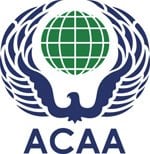Your cart is currently empty!
Boral’s Ash-Infused Envisia® Concrete And New WA Project
Boral’s Envisia® low-carbon concrete has entered the trial phase to test the viability of its use for a new logistics facility in Perth.
Boral’s Envisia® low-carbon concrete has entered the trial phase to test the viability of its use for a new logistics facility in Perth.
Origin Energy support transition away from coal-fired power with new plans to build a giant 700-megawatt capacity battery in the NSW Hunter region.
Fly ash from coal-fired power stations has become an important raw material for construction. But does the decline of coal power mean there’s no more ash?
Fifty-two percent of the coal ash produced during 2019 was recycled – marking the fifth consecutive year that more than half of the coal ash produced in the United States was beneficially used rather than disposed. The volume of fly ash used in concrete increased 1 percent over the previous year, but most other uses saw significant declines, leading to an overall decrease in recycling activity of 31 percent.
The ADAA is continuously working to expand its library of case studies and encourages anyone to contribute. Submission requirements included.
Each chair is an extension of the coal life cycle, creating a sustainable, adaptive and optimistic solution within the furniture design industry.
The Interim Board of the SmartCrete CRC is pleased to announce the appointment of Warren South as Chief Executive Officer for the CRC.
 Our US based sister Association, the American Coal Ash Association Executive Director Thomas Adams was featured recently on the “Let’s Be Civil” engineering podcast. Prior, Tom was employed by the American Concrete Institute and has spent over 30 years in the ready mixed concrete industry. Tom provides an insighht into coal combustion product benefication journey partnership programs with US EPA (C2P2) and uses in the US, but more importantly the future harvesting opportunities for CCPs and role in the circular economy. 40 min duration.
Our US based sister Association, the American Coal Ash Association Executive Director Thomas Adams was featured recently on the “Let’s Be Civil” engineering podcast. Prior, Tom was employed by the American Concrete Institute and has spent over 30 years in the ready mixed concrete industry. Tom provides an insighht into coal combustion product benefication journey partnership programs with US EPA (C2P2) and uses in the US, but more importantly the future harvesting opportunities for CCPs and role in the circular economy. 40 min duration.
The U PANEL walls contain a modular locking wall system that eliminates the need for cement, sand, lime mortar, screws, nails, or bolts to join the modules. The innovative product reduces build time by 75% compared to bricklaying; providing the Amata community with a cost-effective, easily installed and low-maintenance store.
A big win for the Central Coast and construction industry in driving Australia’s future towards a sustainable and circular economy.